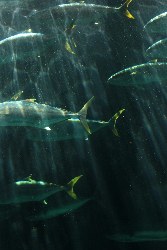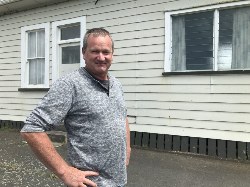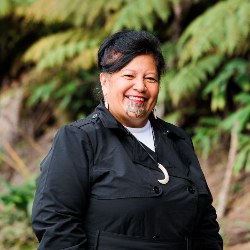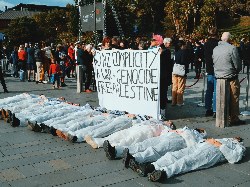Test of New Zealand's Nuclear Accident Response
9 July 2008
EXERCISE
Test of New Zealand's Nuclear Accident Response
New Zealand radiation experts will be participating as obeservers in a simulated nuclear accident in Mexico, starting sometime tonight or early tomorrow morning our time.
The virtual accident is part of a two-day exercise to test national and international emergency plans. The exercise will not pose any risk to the public or the environment.
New Zealand's National Radiation Laboratory, part of the Ministry of Health, will activate its emergency response arrangements.
Implications for New Zealand following a nuclear accident in Mexico would be minor but would involve providing advice to government agencies and the public.
Information from the World Health Organisation and the International Atomic Energy Agency is attached.
--
IAEA to Coordinate Major Exercise to Test Nuclear Accident Response
8 July 2008 | The International Atomic Energy Agency (IAEA) will coordinate a major exercise to test the response to a simulated accident at Mexico´s Laguna Verde nuclear power plant starting tomorrow, 9 July 2008.
74 IAEA Member
States and 10 international organizations will join the
48-hour drill to evaluate national and international
preparedness for a possible nuclear or radiological
emergency.
As this will only be a "virtual"
nuclear accident, the exercise will not pose any risk to the
public or the environment.
The IAEA´s Incident and Emergency Centre (IEC) and other emergency response bodies will work around the clock during the drill, as if a severe radiological emergency were actually occurring.
This exercise will provide an opportunity to identify shortcomings in the national and international emergency response systems that might hamper the response to minimize the consequences of a nuclear accident.
The IAEA coordinates such exercises through long-established Emergency Conventions, legal instruments that have set structures on how information exchange and emergency assistance is conducted in the wake of a radiological emergency or nuclear accident. The IEC receives notifications of emergencies or incidents and then alerts its Member States and relevant international organizations as necessary about their implications. It also coordinates the response to requests for assistance from the affected Member States.
Referred to as Convention Exercise (ConvEx), a ConvEx-1 tests communication; a ConvEx-2 tests response times; and a ConvEx-3 tests the full operation of the information exchange mechanism worldwide. The first of these exercises was based at the Gravelines NPP in France, in 2001, and the second at the Cernavoda NPP in Romania, in 2005.
The simulation is being coordinated by the Working Group on Coordinated International Exercises as part of the Inter-Agency Committee for Response to Nuclear Accidents (IACRNA), for which the IAEA acts as the secretariat
In addition to the IAEA, the UN Food and Agricultural Organization (FAO), the Nuclear Energy Agency of the Organization for Economic Co-operation and Development (OECD/NEA), the World Health Organization (WHO), the Pan American Health Organization (PAHO), the World Meteorological Organization (WMO), the International Civil Aviation Organization (ICAO), the European Commission (EC), the European Police Office (EUROPOL) and the International Criminal Police Organization (INTERPOL) will also take part in the exercise.
For more background and useful links, please visit: This Is a Test: Nuclear Emergency Network Set for Simulation
--
Media Advisory WHO/19
8 July 2008
International Organizations and IAEA Member States To Test Emergency Plans
Geneva, 8 July 2008 – In an effort to strengthen public health emergency response, the World Health Organization (WHO) will take part in a test of radiation emergency plans through a simulated accident at the Laguna Verde Nuclear power plant, Mexico, 9-10 July 2008. This exercise is coordinated by the International Atomic Energy Agency (IAEA). It is being carried out in co-operation with 74 IAEA Member States and nine international organizations in order to test national and international preparedness to respond to a nuclear or radiological emergency.
In this exercise WHO will be testing in particular its Strategic Health Operations Centre and the Radiation Emergency Medical Preparedness and Assistance Network (REMPAN) as key tools of WHO's activities for public health risk detection, assessment and response under the umbrellas of the two Emergency Conventions and the International Health Regulations (IHR-2005). In particular, the WHO Regional Office for Americas (AMRO/PAHO) and the WHO Country Office in Mexico are expected to interact with the National IHR Focal Point of Mexico to test communication channels under the IHR.
Exercises of the international plan, called the “Joint Radiation Emergency Management Plan”, are conducted every few years so that the IAEA, its Member States and international organizations can test preparedness for working cooperatively to respond effectively to an actual nuclear or radiological emergency or incident.
This exercise is focused primarily on testing communication networks and international assistance mechanisms.This exercise will provide an opportunity for WHO, its participating collaborating centres and WHO Regional Office in the America's to test critical elements of public health emergency response, including communications, coordination of activities within WHO, with IAEA as well as with other international agencies.
The exercise is only a simulation and there are no actual risks or hazards to the general public.
The exercise preparation is being coordinated by the Working Group on Coordinated International Exercises as part of the Inter-Agency Committee for Response to Nuclear Accidents (IACRNA). For this exercise the group comprises of the IAEA, the Food and Agricultural Organization of the United Nations (FAO), the Nuclear Energy Agency of the Organization for Economic Co-operation and Development (OECD/NEA), the World Health Organization (WHO), the World Meteorological Organization (WMO), Mexico and its neighboring countries.
ENDS


 Gordon Campbell: On bird flu, AUKUS entry fees and Cindy Lee
Gordon Campbell: On bird flu, AUKUS entry fees and Cindy Lee Environmental Defence Society: Fast-track Approvals Bill Presents A Serious Risk To New Zealand Exporters
Environmental Defence Society: Fast-track Approvals Bill Presents A Serious Risk To New Zealand Exporters NZ Government: New Lab To Help Protect Key Pacific Tuna Fisheries
NZ Government: New Lab To Help Protect Key Pacific Tuna Fisheries Susan Botting - Local Democracy Reporter: Ruawai Leader Slams Kaipara Council In Battle Over $400k Property
Susan Botting - Local Democracy Reporter: Ruawai Leader Slams Kaipara Council In Battle Over $400k Property Te Pati Maori: Another ‘Stolen Generation’ Enabled By Court Ruling On Waitangi Tribunal Summons
Te Pati Maori: Another ‘Stolen Generation’ Enabled By Court Ruling On Waitangi Tribunal Summons Peace Action Wellington: Die In for Palestine Marks ANZAC day
Peace Action Wellington: Die In for Palestine Marks ANZAC day Labour Party: Penny Drops – But What About Seymour And Peters?
Labour Party: Penny Drops – But What About Seymour And Peters?


